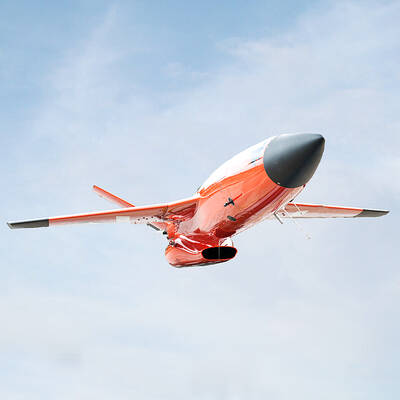For the past four months, Chinese hackers have persistently attacked the New York Times, infiltrating its computer systems and getting passwords for its reporters and other employees.
After surreptitiously tracking the intruders to study their movements and help erect better defenses to block them, the Times and computer security experts have expelled the attackers and kept them from breaking back in.
The timing of the attacks coincided with the report of a Times investigation, published online on Oct. 25, that found that the relatives of Chinese Premier Wen Jiabao (溫家寶) had accumulated a fortune worth several billion of US dollars through business dealings.
Security experts hired by the Times to detect and block the computer attacks gathered digital evidence that Chinese hackers, using methods that some consultants have associated with the Chinese military in the past, breached the Times’ network.
They broke into the e-mail accounts of its Shanghai bureau chief, David Barboza, who wrote the reports on Wen’s relatives, and Jim Yardley, the Times’ South Asia bureau chief in India, who previously worked as bureau chief in Beijing.
“Computer security experts found no evidence that sensitive e-mails or files from the reporting of our articles about the Wen family were accessed, downloaded or copied,” Times executive editor Jill Abramson said.
The hackers tried to cloak the source of the attacks on the Times by first penetrating computers at US universities and routing the attacks through them, said computer security experts at Mandiant, the company hired by the Times. This matches the subterfuge used in many other attacks that Mandiant has tracked to China.
The attackers first installed malicious software, or malware, that enabled them to gain entry to any computer on the Times’ network. The malware was identified by computer security experts as a specific strain associated with computer attacks originating in China. More evidence of the source, experts said, is that the attacks started from the same university computers used by the Chinese military to attack US military contractors in the past.
Security experts found evidence that the hackers stole the corporate passwords of every Times employee and used those to gain access to the computers of 53 employees, most of them outside the Times’ newsroom.
Experts found no evidence that the intruders used the passwords to seek information that was not related to the reporting on the Wen family.
No customer data was stolen from the Times, they said.
Asked about evidence that indicated the hacking originated in China, China’s Ministry of National Defense on Wednesday said that “to accuse the Chinese military of launching cyberattacks without solid proof is unprofessional and baseless.”
In Beijing, Chinese Ministry of Foreign Affairs spokesman Hong Lei (洪磊) told reporters: “The competent Chinese authorities have already issued a clear response to the groundless accusations made by the New York Times.”
Asked about cyberspying and hacking accusations made against China in general, he said: “To arbitrarily assert and to conclude without hard evidence that China participated in such hacking attacks is totally irresponsible.”
“China is also a victim of hacking attacks. Chinese laws clearly forbid hacking attacks, and we hope relevant parties takes a responsible attitude on this issue,” he said.
Additional reporting by AFP

‘WIN-WIN’: The Philippines, and central and eastern European countries are important potential drone cooperation partners, Minister of Foreign Affairs Lin Chia-lung said Minister of Foreign Affairs Lin Chia-lung (林佳龍) in an interview published yesterday confirmed that there are joint ventures between Taiwan and Poland in the drone industry. Lin made the remark in an exclusive interview with the Chinese-language Liberty Times (the Taipei Times’ sister paper). The government-backed Taiwan Excellence Drone International Business Opportunities Alliance and the Polish Chamber of Unmanned Systems on Wednesday last week signed a memorandum of understanding in Poland to develop a “non-China” supply chain for drones and work together on key technologies. Asked if Taiwan prioritized Poland among central and eastern European countries in drone collaboration, Lin

The US government has signed defense cooperation agreements with Japan and the Philippines to boost the deterrence capabilities of countries in the first island chain, a report by the National Security Bureau (NSB) showed. The main countries on the first island chain include the two nations and Taiwan. The bureau is to present the report at a meeting of the legislature’s Foreign Affairs and National Defense Committee tomorrow. The US military has deployed Typhon missile systems to Japan’s Yamaguchi Prefecture and Zambales province in the Philippines during their joint military exercises. It has also installed NMESIS anti-ship systems in Japan’s Okinawa

The Chien Feng IV (勁蜂, Mighty Hornet) loitering munition is on track to enter flight tests next month in connection with potential adoption by Taiwanese and US armed forces, a government source said yesterday. The kamikaze drone, which boasts a range of 1,000km, debuted at the Taipei Aerospace and Defense Technology Exhibition in September, the official said on condition of anonymity. The Chungshan Institute of Science and Technology and US-based Kratos Defense jointly developed the platform by leveraging the engine and airframe of the latter’s MQM-178 Firejet target drone, they said. The uncrewed aerial vehicle is designed to utilize an artificial intelligence computer

Renewed border fighting between Thailand and Cambodia showed no signs of abating yesterday, leaving hundreds of thousands of displaced people in both countries living in strained conditions as more flooded into temporary shelters. Reporters on the Thai side of the border heard sounds of outgoing, indirect fire yesterday. About 400,000 people have been evacuated from affected areas in Thailand and about 700 schools closed while fighting was ongoing in four border provinces, said Thai Rear Admiral Surasant Kongsiri, a spokesman for the military. Cambodia evacuated more than 127,000 villagers and closed hundreds of schools, the Thai Ministry of Defense said. Thailand’s military announced that